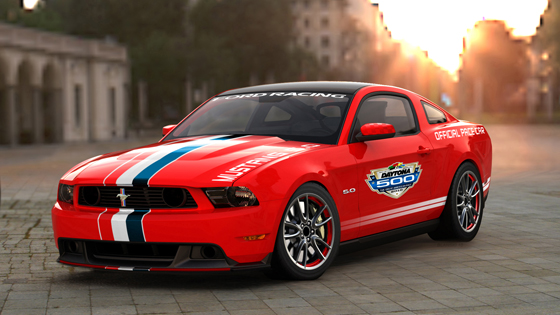More than 9 million Mustangs have been sold since Ford first introduced the iconic pony car in 1964. After four and a half decades on the market, the Ford Mustang continues to captivate car buyers throughout the world.
And while the design of Ford’s beloved steed has evolved over the years to reflect the needs of a changing world, Mustang has never lost its essence – that certain cache that makes it an American icon. At no point in history is this more evident than in the period from 1974 to 1982, when the brand endured two major transformations.
Next month, Ford and the Mustang Club of America will commemorate the 45th anniversary of the Ford Mustang with a four-day celebration in Birmingham, Ala. During the weeks leading up to the anniversary, we are taking a nostalgic look back at Mustang history. Last week, we took you back to the early years, 1964-1973. This week, we begin with 1974.
The Ford Mustang: 1974-1982
It’s 1974. Americans have lost faith in government, following the Nixon Watergate scandal, but the country is moving forward under the direction of President Gerald Ford. The Vietnam War is coming to an end. Peace signs, mood rings, hip-hugger pants and pet rocks all are popular signs of the time. “One Flew over the Cuckoo’s Nest†wins the Oscar for Best Picture, and “All in the Family†continues to be a ratings success on television. “Love Will Keep Us Together,†by Captain and Tennille, is at the top of the record charts. The cost of a postage stamp is 10 cents, and there is a gas shortage in the U.S. – the likes of which hasn’t been seen since World War II.
The oil crisis, rising insurance premiums and tighter emission control standards helped bring the era of high-performance muscle cars to an abrupt end in 1973, and Ford responded with the second generation of the Ford Mustang – the smaller, more fuel-efficient Mustang II, which debuted in 1974.
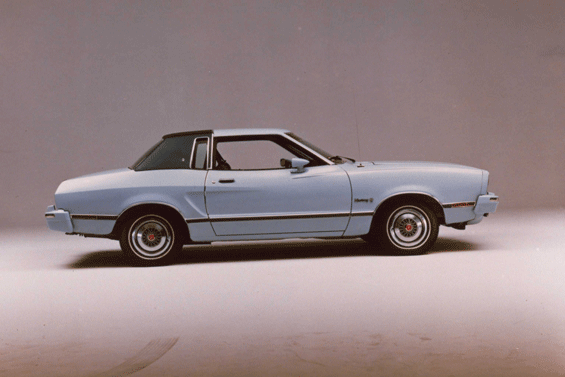
1974 Ford Mustang (Image: Ford)
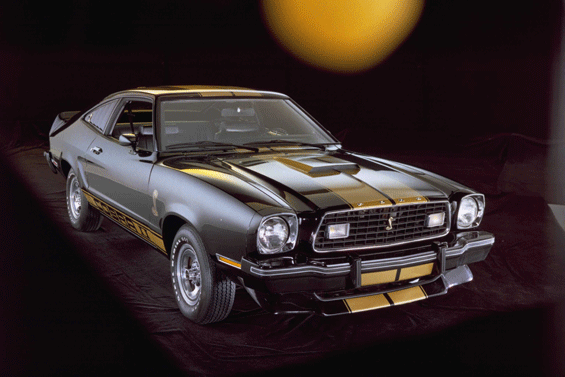
1975 Ford Mustang (Image: Ford)
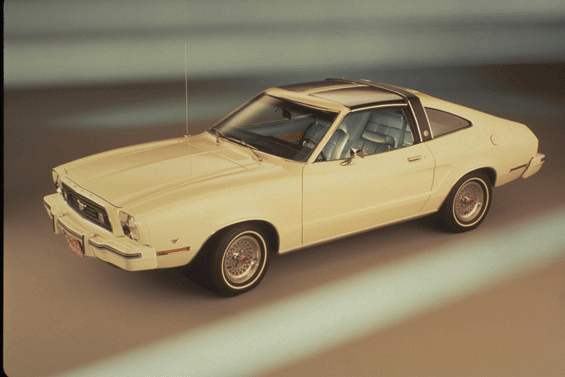
1976 Ford Mustang (Image: Ford)
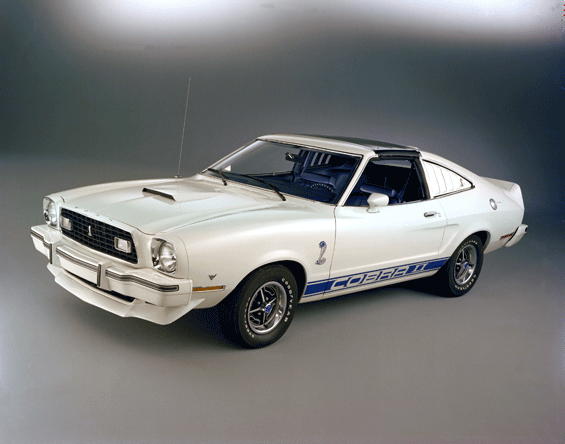
1976 Mustang Cobra II (Image: Ford)
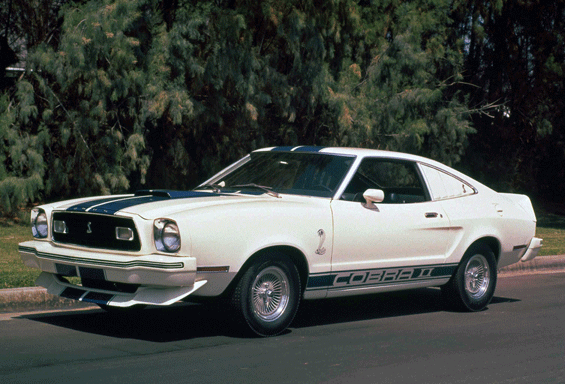
1977 Ford Mustang Cobra II
The Mustang II – built on a derivative of the “Arizona†platform that gave Ford the Pinto – was 19 inches shorter and 490 pounds lighter than the 1973 Mustang. The 1974 model year was the first ever that a V-8 was not offered in the Mustang, and the Mustang II years never saw a convertible option.
Despite its smaller size, the Mustang II brought back traditional Mustang design cues, such as the side scallops from the ‘60s. It also retained classic Mustang traits, like three-place taillights, setback headlamps and the running horse in the grille.
Though the Mustang II has been much maligned over the years by some enthusiasts who claim the car lacked the power and luster of a true Mustang, it was a strong seller for Ford. In its first model year, nearly 386,000 vehicles were sold, and the Mustang II captured the coveted title of Motor Trend “Car of the Year.â€
“The fact that the Mustang II arrived amid the Arab Oil Embargo was further testament that Ford had, indeed, delivered the right car at the right time,†said John Clor, author of the book The Mustang Dynasty. “There’s no denying that the II had connected with its customers in a way few cars of that era had.â€
Performance-hungry enthusiasts prompted the return of the V-8 to the Mustang lineup in 1975. Ford introduced the Shelby-inspired Mustang Cobra II in 1976. And a special edition King Cobra Mustang debuted in 1978.
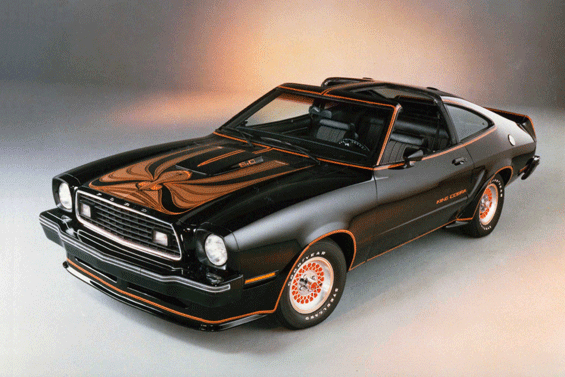
King Cobra Mustang 1978 (Image: Ford)
Mustang’s third major transformation
The third major transformation in the history of the Ford Mustang came in 1979, when Ford introduced a sleek, European-inspired pony car. The all-new vehicle shared its Fox platform with the Ford Fairmont and the Mercury Zephyr, and it was totally different from everything else on the road.
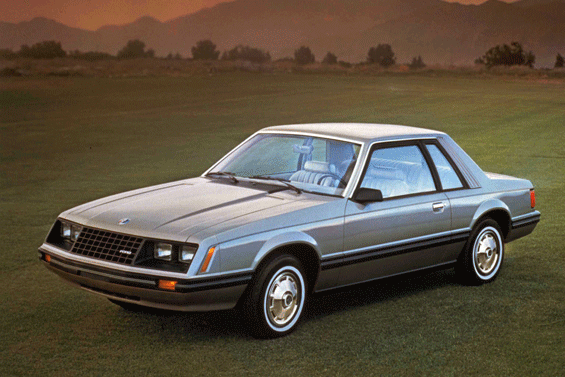
1979 Ford Mustang (Image: Ford)
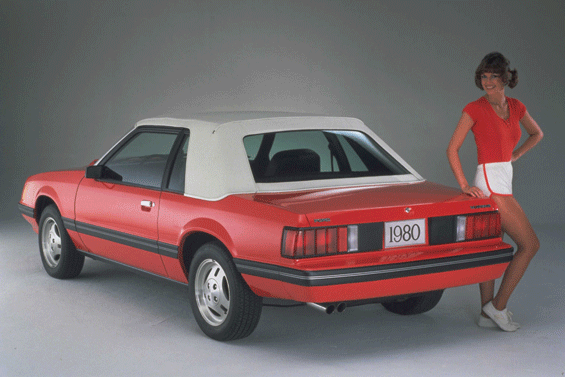
1980 Ford Mustang: The Design needed a girl for attracting men (Image: Ford)
“We wanted to make a fresh statement for Mustang,†recalls Jack Telnack, chief designer of the 1979 Mustang. “We were very strongly influenced by European design, and we knew that we had an opportunity to make a contribution to the fuel economy of the car by more efficiently bending the sheet metal, giving the car a more aerodynamic wedge shape.â€
Unlike its predecessors, the 1979 Mustang featured a slant-back front end. It was four inches longer in body length and wheelbase than the Mustang II. And though it was a bigger car with a more spacious interior, it was 200 pounds lighter than the previous Mustang, due to advanced body engineering and the increased use of lightweight materials.
“We actually wanted people to be uncomfortable with the car when they first saw it because if they weren’t uncomfortable with it, that would mean they had seen it before,†said Telnack. “It took people a little while to get used to the new look, but once they did, they understood the design, and they appreciated that it was a Mustang.â€
It didn’t take long for people to fall in love with the new Mustang. Ford sold 370,000 cars in the vehicle’s first year.
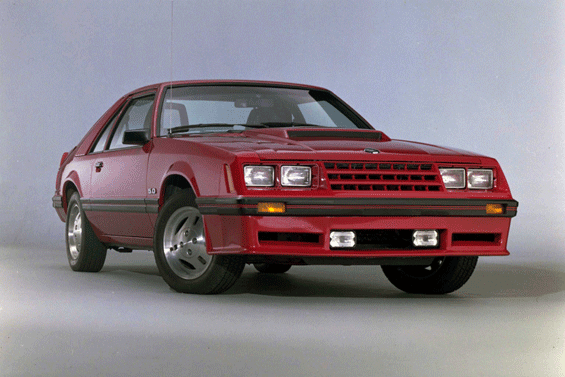
1982 Ford Mustang (Image: Ford)
No significant changes were made to the Mustang between 1979 and 1981, but in 1982, the “Boss†was back. The Mustang GT returned after a 12-year absence, and the 5.0-liter V-8 engine returned for specially equipped 1982 Mustang hatchbacks. At the heart of the Mustang performance revival was a tweaked “high output†302-cubic-inch small-block engine that produced 157 horsepower – the most since 1971.


